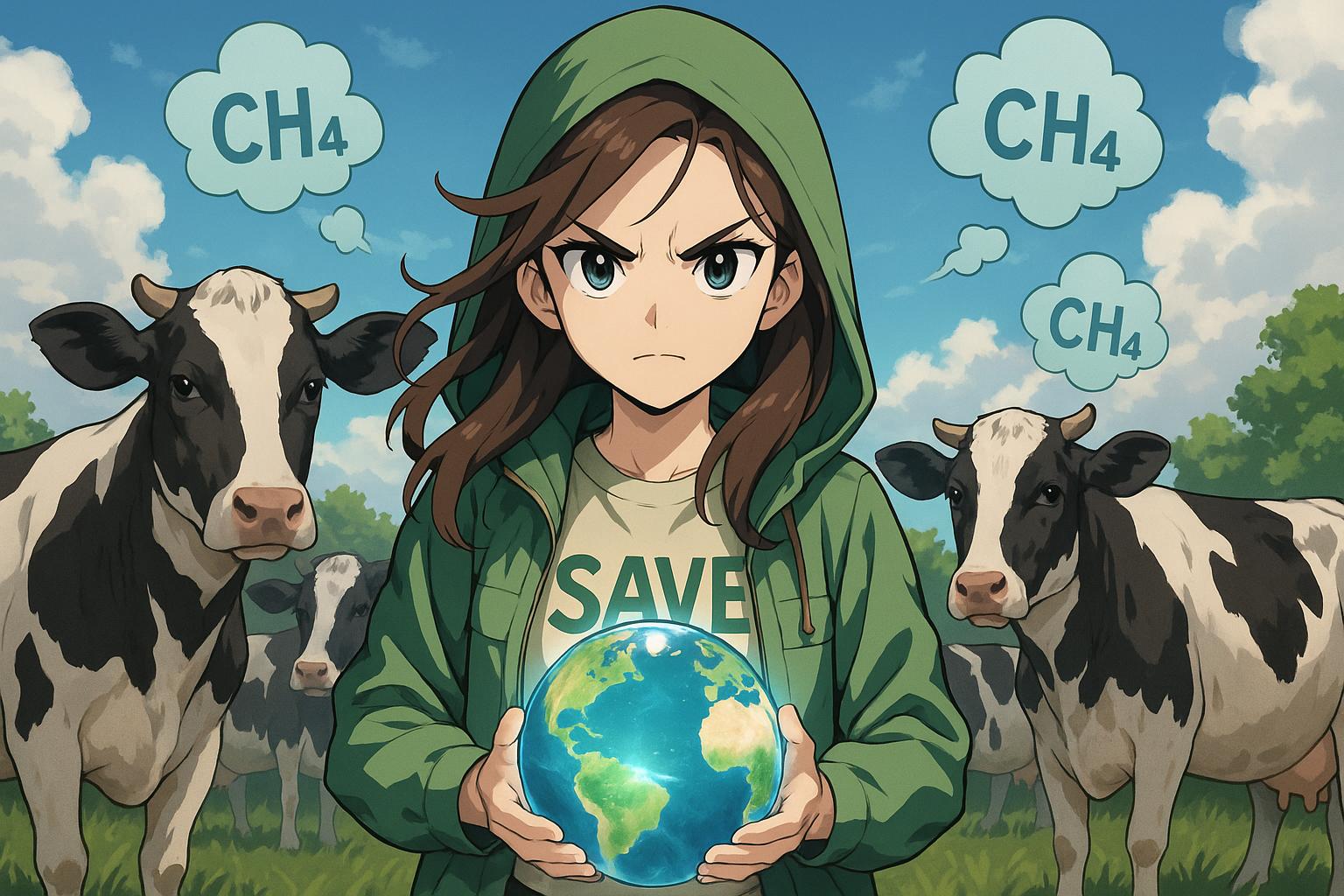A recent assessment by the Changing Markets Foundation has revealed a troubling reality for major dairy producers: they are largely failing to effectively reduce methane emissions. This report draws attention to the alarming lack of clear targets, credible action plans, and transparency regarding methane emissions among some of the world's leading dairy brands and large coffee house chains that rely heavily on dairy products. The assessment, which evaluated the practices of 20 prominent companies, uncovered that while all except a few, including Dunkin’ and Starbucks, acknowledge methane’s role as a climate threat, only two companies—Nestlé and Danone—claim to have made real progress in reducing these emissions.
The findings highlight a significant disconnection in the industry's responses to the urgent climate crisis. Together, the evaluated firms generate over $420 billion in annual revenue, yet none have shown intent to lower their dairy product sales. Most companies are not monitoring their emissions effectively; only six out of the twenty actively track methane emissions, and a mere four are prepared to disclose these figures publicly.
Leading the charge is Danone, which topped the assessment with a score of 59 out of 100. The company has set a specific target to cut its methane emissions by 30% by 2030, an ambitious goal supported through various initiatives such as improved animal health practices, better feed management, and the utilisation of technologies like feed additives. Danone has already reported a significant 14% reduction in absolute methane emissions between 2018 and 2020, indicating that substantive progress is possible when companies commit to actionable strategies.
In contrast, General Mills ranked second with 53.5 points for having published a climate target and plans, though these measures were not specific to methane reduction. Nestlé and Arla Foods followed closely behind, each receiving 49 points; however, it is noteworthy that Nestlé has explicitly endorsed the notion of reducing public dairy consumption, hinting at a broader recognition of the need for systemic change.
Despite this progress, Nusa Urbancic, CEO of Changing Markets, expressed concern that the industry's collective response is inadequate. “Dairy production is a rare lever to control methane emissions, but one that firms clearly don’t want to touch,” she stated, suggesting that the absence of firm methane-specific targets and action plans indicates a reluctance among major players to confront one of the most effective means of combating climate change.
With methane being over 80 times more potent than carbon dioxide in the short term, effective reduction of its emissions is crucial for achieving broader climate goals, particularly the aim of limiting global temperature rise to below 1.5°C. The Changing Markets Foundation argues that reduction targets need to be established firmly at the government level, especially in regions like Europe, which has made significant commitments through the Global Methane Pledge.
Beyond these large corporations, there are emerging innovations in the dairy industry aimed at mitigating methane emissions. For example, Ashgrove Dairy in Tasmania is piloting a product called "Eco-Milk," which incorporates seaweed extract oil into cattle feed and claims to reduce methane emissions by approximately 25%. However, consumer willingness to pay a premium for such environmentally friendly products remains uncertain.
Moreover, as the industry explores feasible technological solutions, methane inhibitors are garnering attention for their potential to disrupt the methane production process in cattle. While these inhibitors show promise, challenges related to cost, regulations, and acceptance among small-scale farmers hinder their widespread implementation.
Amidst these challenges, the societal impacts of dairy emissions cannot be ignored. In California, for example, communities near large dairies report significant air quality issues linked to emissions. While manure digesters are being promoted as a method to convert waste into biofuel and thus reduce greenhouse gases, critics caution that such technology could exacerbate other pollutants, posing further health risks, particularly in vulnerable communities.
The findings from the Changing Markets assessment, combined with the various innovative approaches and regulatory challenges in the dairy sector, illustrate the urgent need for both firms and governments to take decisive action against methane emissions. The dairy industry holds a unique position in the fight against climate change, and with the right commitments and transparency, it could play a pivotal role in fostering a more sustainable future.
Reference Map
1. Paragraph 1: [1]
2. Paragraph 2: [2]
3. Paragraph 3: [3]
4. Paragraph 4: [5]
5. Paragraph 5: [4]
6. Paragraph 6: [6]
7. Paragraph 7: [2]
8. Paragraph 8: [7]
Source: Noah Wire Services
